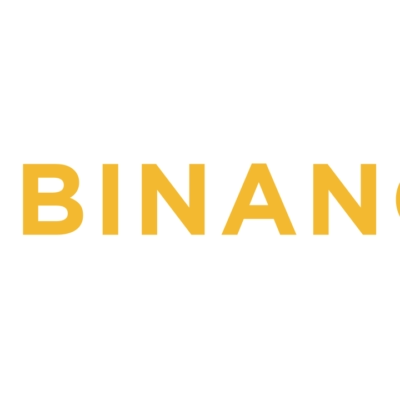Overview of Uphold’s Staking Service Resumption
U.S.-based cryptocurrency exchange Uphold has resumed its staking services for U.S. residents as of March 3, 2025 . Users can now stake Ethereum (ETH), Cosmos (ATOM), Polkadot (DOT), and 19 other cryptocurrencies to participate in network validation and earn staking rewards . Rewards are paid in the same cryptocurrency that was staked, with a weekly payout frequency . The staking program also includes Solana (SOL) and Near Protocol (NEAR), making it one of the most comprehensive staking offerings in the industry, second only to one other major platform . Staking yield rates vary by blockchain but typically range between 3% and 13% annually, though final returns depend on the price fluctuations of the underlying assets .
Prior to this U.S. launch, Uphold had already resumed staking services in the United Kingdom in February 2025, following a revision of the Financial Services and Markets Act (FSMA 2000) by the U.K. Treasury . In December 2024, the company also introduced a 5.25% annual reward program for stablecoin deposits , which complements the staking program . These initiatives are part of Uphold’s broader effort to enhance passive income opportunities for its customers. Users can access the staking feature by updating to the latest version of the Uphold app .
Background: Changes in U.S. Regulatory Environment
Uphold previously halted its U.S. staking services due to heightened regulatory scrutiny from the U.S. Securities and Exchange Commission (SEC). In 2023, the SEC took a strict stance on staking services, labeling them as potential unregistered securities offerings . This led to regulatory uncertainty, prompting many crypto service providers to suspend staking programs for U.S. customers .
A turning point came in February 2023 when the SEC imposed a $30 million fine on Kraken, forcing the exchange to discontinue its staking program . The SEC’s regulatory enforcement led many platforms, including Uphold, to preemptively shut down staking services in anticipation of further crackdowns .
However, the regulatory landscape in the U.S. has shifted significantly in 2025. Under the new Trump administration, cryptocurrency policies have softened. Key changes within regulatory agencies have also had an impact. For instance, Hester Peirce, known as “Crypto Mom,” was appointed to lead the SEC’s crypto task force, and Paul Atkins, a pro-crypto advocate, is expected to become the next SEC chairman .
Uphold CEO Simon McLoughlin noted, “U.S. crypto regulations are clearly shifting under the new administration,” and welcomed the inclusion of crypto-friendly leadership within regulatory bodies . Furthermore, on February 27, 2025, the SEC dropped its lawsuit against Coinbase, marking a major policy reversal that signaled a more accommodating stance toward digital asset companies . The SEC had originally sued Coinbase in 2023, alleging that its staking program and some altcoins were unregistered securities . However, the case was voluntarily dismissed by the SEC, effectively ending a legal battle that had lasted nearly a year and a half .
These regulatory shifts have provided a green light for Uphold to relaunch its staking services in the U.S. The company’s CEO expressed confidence in the new landscape, emphasizing that “the industry is finally seeing a regulatory approach that acknowledges blockchain technology’s role in financial markets” .
Market Impact: Staking Industry and Investor Reactions
The resumption of Uphold’s staking services is expected to have significant implications for the staking market. U.S. investors, who had limited staking options due to regulatory constraints, now have a legal and transparent way to earn staking rewards again. According to JPMorgan, the staking market is projected to generate $40 billion in annual revenue globally by 2025, underscoring the growing importance of staking as an income-generating mechanism .
The regulatory shift has already triggered a positive reaction in the market. After the SEC dropped its lawsuit against Coinbase, Coinbase’s stock (COIN) surged by 15%, climbing from $200 to $230 within an hour . Bitcoin (BTC) also rose by 2%, briefly hitting $50,000, while Ethereum (ETH) gained 1.5%, reaching around $3,000 . These price movements indicate that investors are optimistic about regulatory clarity and the growth potential of staking services.
While staking offers attractive yields, investors must remain mindful of the price volatility of the underlying assets. Even with annualized staking rewards, the actual returns depend on asset price performance. Some cryptocurrencies have unstaking periods, meaning that funds are locked and cannot be withdrawn immediately. Therefore, investors should carefully evaluate staking terms, project credibility, and token price stability before committing funds .
Future Outlook: Implications for Other Exchanges and Investment Strategies
Uphold’s decision to resume U.S. staking services could influence other exchanges to follow suit. In 2023, many platforms, including Kraken, Crypto.com, and Binance.US, halted staking programs due to regulatory uncertainty. However, with SEC policy shifts, these platforms may reassess their approach and consider reinstating staking services .
Coinbase, which faced SEC scrutiny, had continued to offer limited on-chain staking for specific cryptocurrencies. With legal risks now significantly reduced, Coinbase and other platforms may expand their staking services in the coming months . In Europe, the EU’s MiCA regulatory framework is set to provide clearer guidelines for staking, fostering a more stable operating environment for crypto platforms.
Despite this positive momentum, regulatory risks have not completely disappeared. While the SEC has eased its stance, U.S. lawmakers have yet to finalize comprehensive crypto legislation. Future political shifts or market changes could bring renewed regulatory scrutiny. Industry experts caution against over-optimism, suggesting that investors should remain cautious while closely monitoring regulatory developments.
From an investment perspective, the resumption of staking services opens new opportunities for long-term crypto holders. Investors can now stake Ethereum, Solana, and other proof-of-stake (PoS) tokens for additional yield while maintaining exposure to crypto’s long-term growth. Given the improving regulatory environment, more institutional investors may enter the staking market, driving further adoption.
However, it is crucial to choose staking platforms carefully. Uphold has implemented full asset reserve transparency, ensuring 100% of customer assets are backed and providing real-time proof-of-reserves every 30 seconds. Investors should prioritize platforms with strong security, clear staking policies, and full regulatory compliance to mitigate risks.
Conclusion: A Turning Point for U.S. Staking
Uphold’s decision to reintroduce staking services in the U.S. is a major milestone for the crypto industry. The easing of regulations under the new SEC leadership has created a more favorable environment for staking, restoring a key income-generating feature for investors. If this trend continues, staking could play a central role in enhancing the attractiveness of digital asset investments and fostering long-term industry growth.
Investors should stay informed on regulatory updates and exchange policies while carefully considering the risks and rewards of staking. If the regulatory environment remains favorable, the revival of staking in the U.S. could significantly impact the crypto market’s evolution and attract new capital inflows into the sector.










